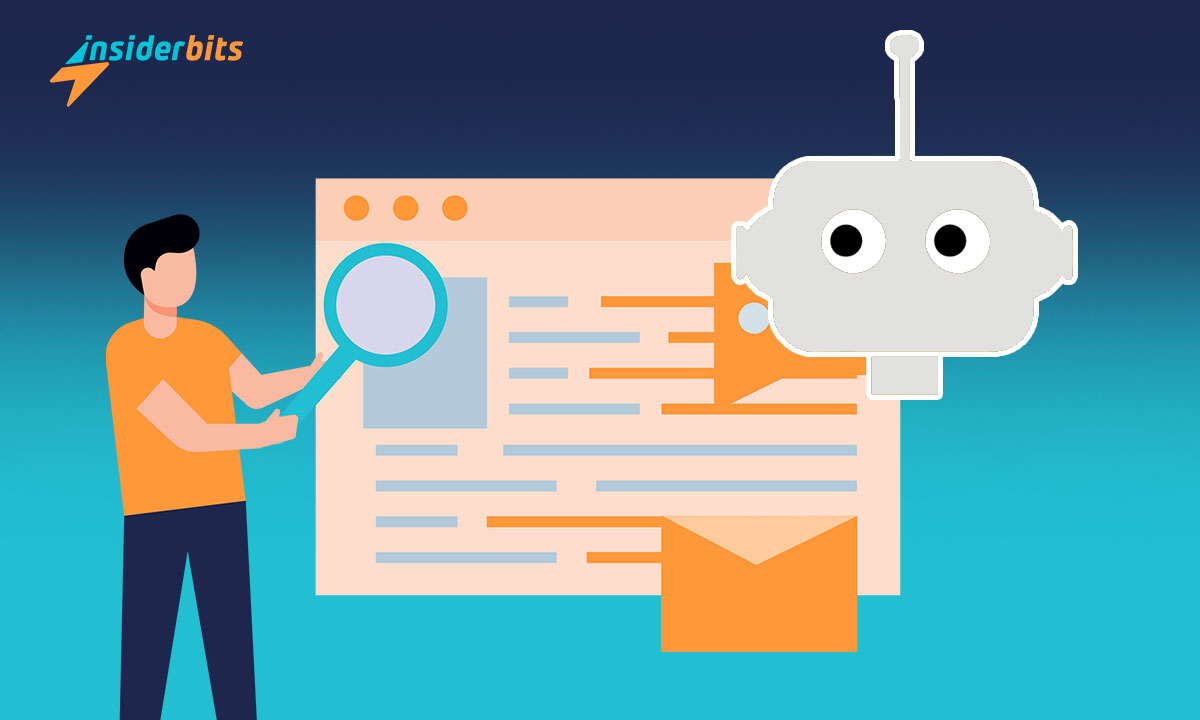Here we are again! Let’s talk about AI content. At this point, in 2024, Artificial Intelligence is no longer a futuristic concept. It is now a pure and tangible reality. It scares many because they believe they will be left without a job; others use it indiscriminately, and a few know how to exploit it.
We can do countless valuable things with it, but when abused, we begin to suffer decay and involution. What are we not referring to? Stay! We will tell you little by little. In addition, we illustrate how to use AI and detect when others use it.
What is AI content?
Indeed, you have ever wanted to know if a text you have read, for example, is AI content. They often use it to get by, giving wrong information or simply killing the value of good work. You can find this in texts, photos, videos, etc.
Don’t forget that this topic is constantly evolving. As this technology advances, some traits that tell us it wasn’t a human doing it may become less reliable. In turn, new ways to detect it may emerge. Therefore, we will approach this matter with an open mind, an objective attitude, and continuous learning.
Let’s analyze natural language
One of the leading indicators that algorithms have generated a text is natural language analysis. These systems, although advanced, still need help to fully capture the subtleties and nuances of our language as humans. Take a look at these clues that can help you identify who wrote the text:
Pattern Repeat
They often repeat specific linguistic patterns or phrases; simple words are usually redundant. If a text repetitively uses the same grammatical structures or idiomatic expressions, it could indicate that it was machine-generated.
Lack of coherence
It is not a very common feature; it may have been in the beginning, but it has already become sufficiently sophisticated. In general, it is coherent. However, it can sometimes present inconsistencies or abrupt jumps in the logical flow. If you detect that a text seems to deviate from its narrative thread or has abrupt transitions, you may suspect.
Generic or impersonal language
It isn’t delightful if we want to enjoy a suitable, fluid, and engaging read. It often tends to produce texts with more generic or impersonal language. In this context, they lack the personality and distinctive style that only humans can give in their writing.
Grammatical or semantic errors
It is not very common and is not a sign that you can use to say that it is a text made by a machine. Well, it depends a lot on the writer’s knowledge.
You can use it in conjunction with other cues. These errors can occur when the system is very saturated, poorly designed, or has an algorithmic error at that time. This way, they can still make subtle mistakes or misuse words or phrases from a semantic point of view.
Images in seconds
It’s not all about the texts. It is also used to generate images. The result can be realistic, complex, or genuinely mediocre, depending on our artificial neural network model.
Blurry or inconsistent details
Images may have blurry or inconsistent details, especially in complex or highly textured areas. If you notice areas of the image that seem blurry or have strange visual artifacts, this is your clue.
For example, this intelligence has severe problems with illustrations of hands and feet. 80% of these images have these complex parts very poorly done.
Where did semantic coherence go?
It often generates beautiful and inspiring works. But sometimes, capturing a scene’s semantic coherence can be difficult. Do you see elements or objects that don’t make sense in the context of the image? It is another sign to pay attention to.
Excessive symmetry or repetitive patterns
We believe it is the biggest problem of “redundancy” and “repetition,” and we usually find it in AI content 95% of the time. Do you notice areas of the image with excessive symmetry or patterns that repeat unnaturally? So, it may be that the painter uses numbers instead of a brush.
Artifacts or noise
Some images may exhibit visual artifacts or digital noise not typically found in images captured by traditional cameras. However, as with texts, these indicators are not definitive and may become less reliable as technology advances.
Tools to detect if a human did it
We shared the manual indicators above. However, automated digital “plus algorithms” tools can help you detect if a human did it.
There are machine learning algorithms, natural language recognition, and image analysis to identify if another type of algorithm is the author. It can be ironic, right? It’s not bad; that’s technology.
- For text: Tools like Smodin, 1Text, ContentWatch, or AI Text Classifier.
- For images: Hugging Face or IsItAI?
These tools can help analyze quickly and efficiently. However, don’t get obsessed. They are not infallible and can produce false positives or negatives—work based on the probabilities of the results you obtain.
Ethical and legal considerations of AI content
Let’s delve a little into the legal issue. Excellent and vital considerations about AI-generated content arise here. Some issues to keep in mind:
- Copyright and intellectual property. If content has been generated in this way, who owns the copyright? Those who offer these services leave the generated content without copyright. Therefore, the rights would be held by whoever keeps what was produced.
- Transparency and disclosure. There is an ongoing debate about whether produced content should be identified as such, especially in contexts where it could be misleading or deceptive. It is because this type of intelligence can suffer from “hallucinations” and invent information that, no matter how nice it may sound, is false.
- Bias and discrimination. They may reflect the biases and prejudices in the data with which they were trained. It can lead to discriminatory or culturally or socially insensitive results.
- Privacy & Security. We do not recommend posting personal information, as it is unclear where it goes.
These aspects are complex and abstract and do not have simple answers, and they deserve a delivery dedicated to discussing them only. As technology advances, debate and appropriate regulation will be necessary to ensure its ethical and responsible use.
Why AI content detection tools are not foolproof?
We will broadly address the complex issue of the integrity of a detector and why you should not get obsessed. These tools can make mistakes.
This is due, in large part, to the inherent complexity of human language. Furthermore, it is based on specific patterns that only capture some of the subtleties and nuances of human expression.
Styles between writers and creators
One of the main challenges is that a person’s writing style and level of knowledge can vary. Some writers or content creators have a more polished and refined style, while others may have a more informal or conversational approach.
• This variability can make it more difficult to distinguish between what a machine made and what was created by humans.
• People do not usually express themselves in short, structured sentences in a specific way.
• Our language is often more fluid and natural, with longer sentences, idioms, and complex grammatical structures. It poses a challenge to detection algorithms that rely primarily on textual patterns rather than the broader context of the content.
For example, what if the writing style or sentence length doesn’t fit the patterns the detector expects? You can throw around that it’s made by a machine when made by a person. Can you see that it is pretty abstract?
So I can’t trust?
It does not mean that we should discard trust in this software. On the contrary, despite their limitations, they are valuable tools for identifying rare texts.
Likewise, they serve as a first line of defense against a work without a flesh-and-blood author behind it. The important thing is to understand your strengths and weaknesses. And work on probabilities without obsessing over a specific percentage.
Should we use technology to create?
This question resonates with many and touches many because GPT Chats and other similar services appear wherever we turn. There is no simple answer, as it involves both opportunities and risks that we must carefully consider.
First, it is essential to recognize that these machines can be powerful tools that make many jobs faster and easier. For example, they can help generate initial drafts, do preliminary research (needed), and suggest ideas or approaches. They can even help in the inspiration process and provide a draft that can be refined later.
In that sense, it can serve as an assistant that speeds up our times, not replace us. It is an understandable fear, but it is hardly possible that one of these assistants can have the abstract capacity of the human mind.
Can you imagine a novel like “Prince Lestat” by Anne Rice written by a machine? It would be a more “empty” or impersonal production, lacking the depth, emotion, and unique perspective human beings can bring.
Don’t be horrified
Being horrified or afraid of these things too much is counterproductive. Technology has continuously evolved, and rather than resisting it, we should look for ways to harness its potential responsibly and ethically. The key is finding the right balance.
- The error lies in trusting an algorithm to generate content without human supervision or review.
- A wiser approach would be to use it as a support tool. But always with the intervention and judgment of someone who can verify the content’s quality, relevance, and value.
After reading all this, what are your conclusions? As you have seen, detecting who the author is is not only a technical issue but also an ethical and social imperative. It also requires a multi-faceted approach to all the elements we mentioned above.
We can only harness technology’s full potential while protecting the fundamental values of human creativity, intellectual property, and information integrity.
We hope this information has given you a new or broader perspective. And, of course, that you have found a solution to what you were looking for. Remember to read other articles on the Insiderbits blog so you can get all the news.





